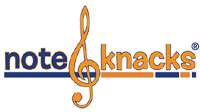“In case you missed all the hype, the flipped classroom is a form of blended learning in which students learn online at least part of the time while attending a brick-and-mortar school. Either at home or during a homework period at school, students view lessons and lectures online. Time in the classroom, previously reserved for teacher instruction, is spent on what we used to call homework, with teacher assistance as needed.” – The Transformational Potential of Flipped Classrooms, Education Next By Michael B. Horn
I was reading the Education Next website and came across this article. It was an intriguing concept to me. In fact, I have been mulling it over in my brain for quite some time before I sat down to write this post. The questions that come to mind are:
- How practical is this for the music classroom?
- Are there parts of it that can be useful?
- What happens with kids that don’t have access to technology (how many of those kids actually exist nowadays?)
- Is this only good for older kids or can elementary aged students benefit, as well?
- As this becomes more popular, what is the greater impact on for education in general?
In one of our first newsletters, we spoke about a teacher who posted videos of herself playing the recorder online so that kids could practice at home. We thought it was brilliant! It was a way to help students remember the proper hold of their recorders, as well as what exactly to practice. I don’t think we could categorize this as a “flipped classroom”, but the elements are there. How can we use technology to help meet standards without pushing it too far?
Technology is there to help us. When our students go home after our class (a class they only have once a week), we hope they remember to practice their songs for the concert and how to hold their instruments. Because not all parents are fluent in music, they do not know how to help their child do his/ her music homework. A video can be very useful in showing how to hold a bow or sing in tune. It is also another way for you to connect your classroom with the home environment. Parents are able to see exactly how and what you teach. Perhaps FINALLY we can get rid of the stigma that we are simply a “sing a long” class!
As far as accessibility, it is hard to believe that there are children without a computer at home. According to the US Department of Commerce, 77% of the population in 2010 had a computer at home as compared to only 62% in 2003. Although 100% of children do not have a computer at home, most, if not all, schools have computers that students can use. Teachers will find a way, as they always do, to help their students get what they need!
I am excited that this generation of students can use technology to learn. There are many benefits to having access to the internet and devices that can enhance their learning experience, BUT it also worries me a bit. Our classes tend not to be lecture, as they are for older kids, so expecting a video to do the job that you would do in person is impractical and inefficient. It is also VERY important that we don’t send the message that classroom teachers are expendable! Young children still need the benefit of a teacher present while they learn a concept for the first time and monitoring progress thereafter.
Like everything else, the key is balance. We can’t simply use the latest trend because it is new and shiny. We must think the idea through. The best thing educators can do is to have as many tricks in their bag as possible! By trying lots of different techniques, kids will learn to look at concepts from many different angles. This can only help the process of understanding.
